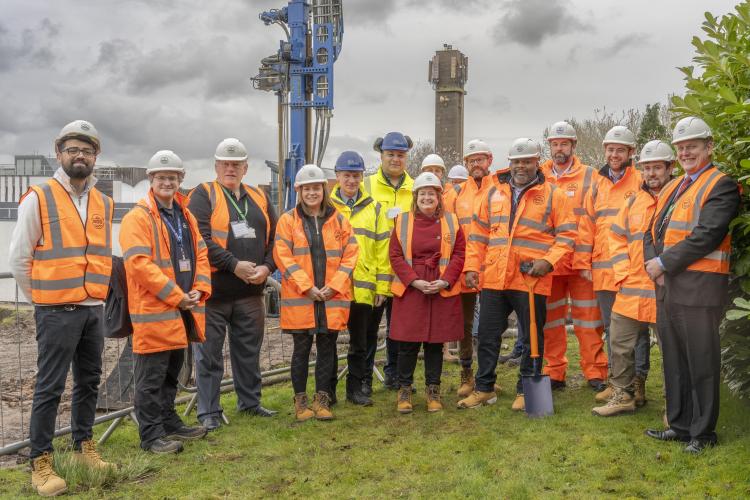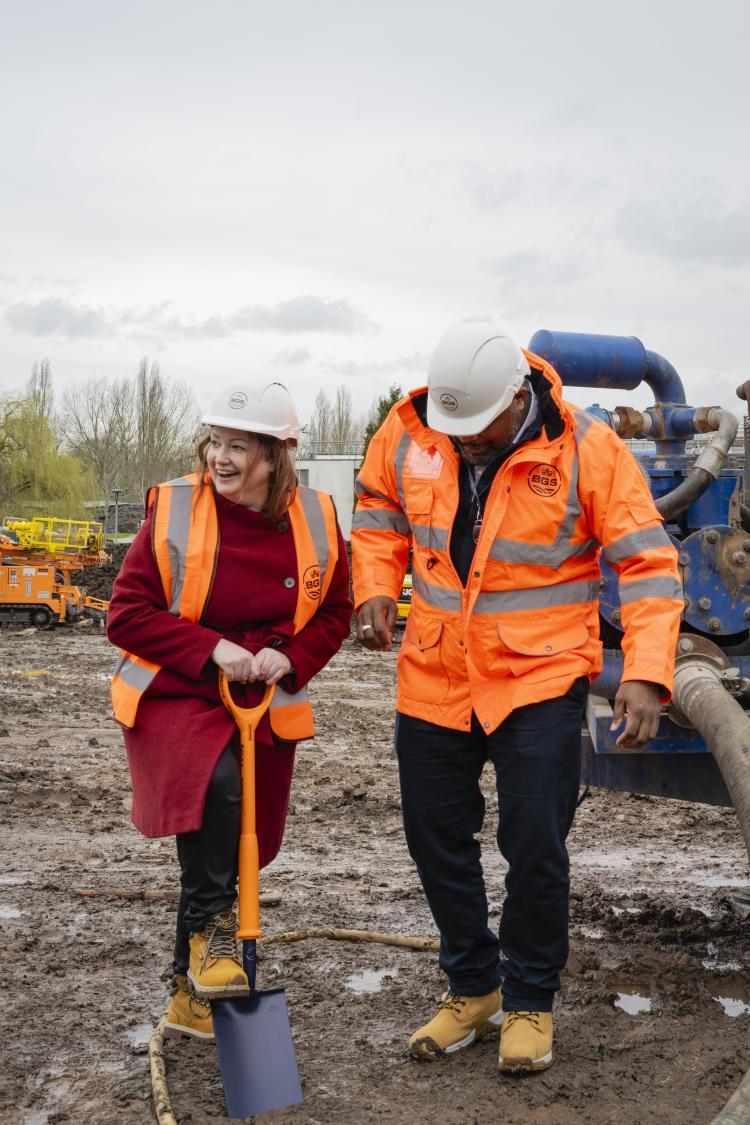Living laboratory’ will help meet net zero targets
Tuesday 05 March 2024
British Geological Survey breaks new ground with new low-carbon heating solution set to provide data to the public
The British Geological Survey has broken ground on its geothermal heat pump project at its headquarters in Keyworth, Nottinghamshire.
The ground-source heat pump and living lab project costs £1.7 million and is majority funded by the Natural Environmental Research Council (NERC) with a further contribution from Phase 3c of the Government's Public Sector Decarbonisation Scheme.
The scheme is run by the Department for Energy Security and Net Zero and delivered by Salix.
The renewable energy system will be the largest system of its kind in Rushcliffe, will include 28 boreholes drilled to a depth of 225 m.
The British Geological Survey says it will save around 30 tonnes of carbon dioxide (CO2e) per year and reduce the organisation’s heating bill.
Forming part of the British Geological Survey’s Keyworth campus decarbonisation plans, the proposed system will involve the removal of greenhouse gas-emitting gas boilers and will heat two buildings on the Keyworth site, where more than 400 members of staff work, including tenants and non-British Geological Survey staff.

Photo credit: British Geological Survey © UKRI
Pictured: Breaking ground ceremony. L to R: Sami Massum (BGS), David Boon (BGS), Councillor Rob Inglis, Michelle Bentham, (BGS), Mark Thorpe (Pick Everard), Ross Goodband (Pick Everard), Ruth Edwards MP, Daniel Crow (BGS), Gershwyn Soanes (BGS), Andrew McConnochie (BGS), Mike Potter (NERC), James Howell (NERC) and Edward Leddy-Owen. BGS © UKRI
The ‘living laboratory’, will include state-of-the-art sensors deployed in the heat extraction boreholes and buildings. The technology will provide data in real-time which project leads say will help increase the public’s understanding of ground-source heat pumps and how they can be an effective solution for heating both new and existing buildings in the UK.
As part of this project, the British Geological Survey will also be taking rock samples for further analysis to help get a better understanding of the flow of heat and water underground.
The British Geological Survey says that the type of geology on-site at Keyworth means that this information is transferable to a large part of the UK; the information generated will be of help to other, similar projects.
MP does the honours
To mark the installation of this technology and the ground-source heat pump, the British Geological Survey invited local MP Ruth Edwards to the site where she met senior staff, scientists and members of the estates team at the British Geological Survey to learn more about the project, as well as to see the borehole drilling taking place.
Ruth Edwards, MP for Rushcliffe, said: “I was honoured to be asked to break ground on the new geothermal heat pump at the British Geological Survey in Keyworth.
“This is a hugely exciting opportunity to help decarbonise the public sector estate. I'm thrilled that we are trialing the technology here in Rushcliffe and that the data generated by the trial will be used to inform other projects around the country. Many congratulations to all involved!”
"We are delighted to work with the British Geological Survey on this fascinating project. The state-of-the-art technology and the innovation being deployed are hugely exciting and the impact this will have on reducing carbon emissions is inspiring. We cannot wait to follow the project progress and see how a ‘living lab’ with all its detailed data collection will work and benefit this site and all the people who use it.”
Mike Potter, senior environment manager at NERC, said: "This inspiring project to decarbonise heat at the BGS Keyworth campus will reduce our reliance on fossil fuels. This is the first geothermal heat pump system to be installed on the UKRI estate and will support our journey to net zero in 2040.
“What makes this project extra special is the ‘living lab’ feature which will support data collection and knowledge sharing that could inform the heat pump sector as a whole.”
David Boon, senior engineering and geothermal geologist at the British Geological Survey, said: “Geothermal energy is heat that naturally occurs under the ground and is available 24/7 across the UK.
“This project will demonstrate the deployment of ground-source heat pump technology to decarbonise existing buildings across the public sector estate.”
Daniel Crow, head of the British Geological Survey Estates and Facilities, said: "This exciting project gives us the opportunity to blend our observation of the subsurface with leading low-carbon heating. The disruption to British Geological Survey staff will be kept to a minimum, with short closures of a couple of buildings to allow for the installation of heat emitters.
“The drilling and heat pump installation is due to last around three months. The borehole installation should not impact on Keyworth site operations due to the careful planning and specification involved in the project.”

Photo credit: British Geological Survey © UKRI
Ruth Edwards MP at the breaking ground ceremony



